Diego Velázquez, life and works of Spanish Baroque painter
Diego Velázquez (Diego Rodríguez de Silva y Velázquez; Seville, 1599 - Madrid, 1660) was a Spanish painter and portraitist who lived and worked at the court of King Philip IV of Spain. During the years of his activity, which centered in the first half of the 17th century, Diego Velázquez represented the era of Baroque art by creating masterpieces including the famous painting Las Meninas, where he not only set up a visual representation of the complicated arrangements of power, but also reflected on the values of artistic representation. Above all, the painter distinguished himself in the art of portraiture, where he was able to prove himself capable of great mastery in depictions of extraordinary realism, succeeding beyond measure in touching even the depths of the human psyche.
Something similar in the field of portraiture was done in Rome by Gian Lorenzo Bernini, in the art of sculpture-so much so that he created the marble portrait of Pope Innocent X by looking at the oil on canvas already executed by Velázquez in 1650. For his part, Diego Velázquez also looked to the Italian art scene, a culture he was able to assimilate thanks to two educational trips made twenty years apart: these two sojourns are usually used to divide three phases of development in Velázquez’s artistic poetics.
The work of this formidable Spanish artist then meant a decisive model of inspiration for artists to follow, such as the painters of Realism and then again of Impressionism. The painter Édouard Manet, in particular, was impressed by his painting, as were modern artists such as Pablo Picasso, who reinterpreted the painting Las Meninas, and the painter Francis Bacon, who revisited his famous portrait of the pontiff. Currently, Velázquez is considered one of the highest exponents of Spanish painting and one of the most eloquent masters in the History of Art.
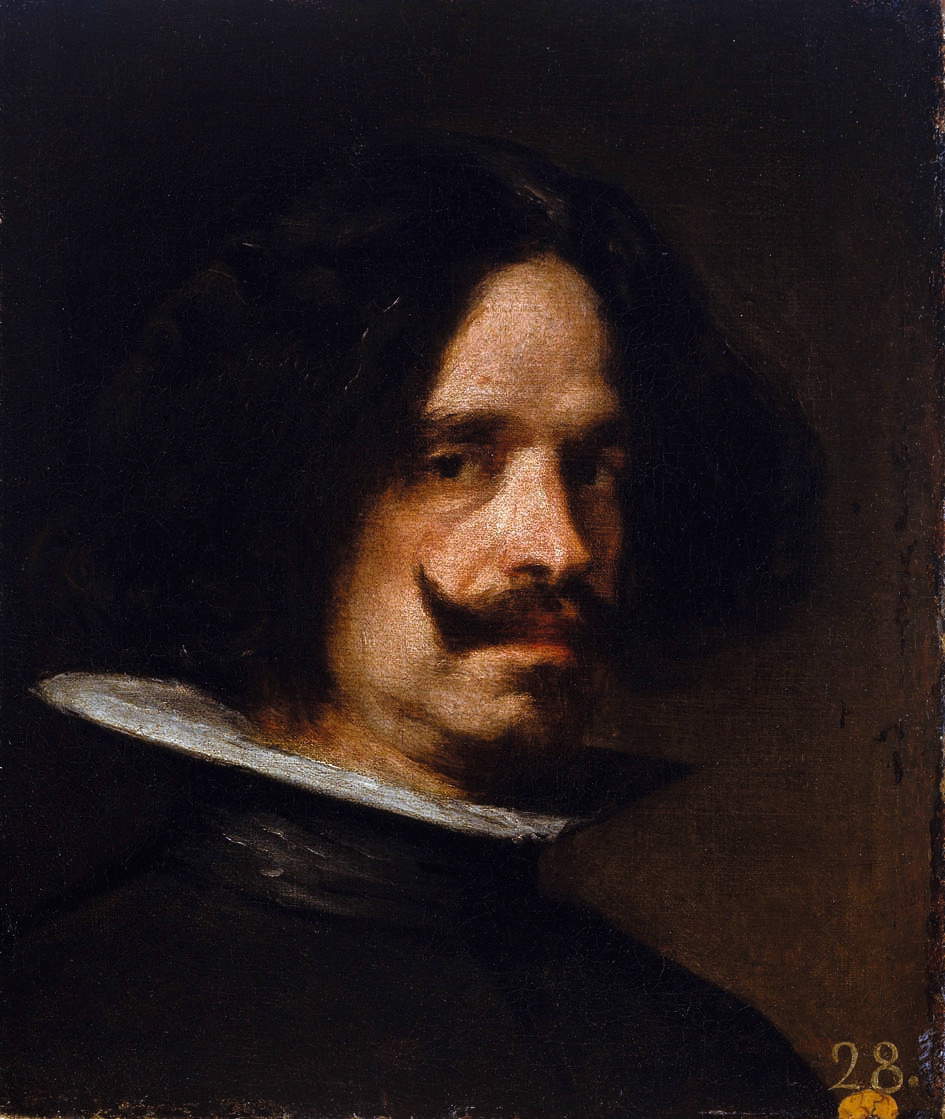
Life of Diego Velázquez
The artist was born in Seville, Andalusia, in the first week of June 1599. His father was named Juan Rodríguez de Silva and was a lawyer of Portuguese descent. His mother, Jerónima Velázquez, belonged to the hidalgo class, Spain’s minor nobility. Diego took his mother’s surname, as was the custom in Andalusia. Velázquez’s was a childhood marked by areligious upbringing: his parents directed him to linguistic and philosophical type studies, trying to set him up for an intellectual profession. Yet young Diego soon showed that he had an innate artistic talent, so he began an apprenticeship in Seville, at the studio of Francisco Herrera the Elder. The latter painter did not look favorably on Italian art, rather he despised its influence on Hispanic art. Later, the artist began to study with Francisco Pacheco, another master in Seville. Here Velázquez studied proportions and perspective, following the simple, realist style that characterized the master . In 1618, he married the teacher’s daughter, Juana Pacheco. Two daughters were born of the marriage, the first of whom died in early childhood. Despite the tragedy, in the decade from 1620 to 1630, the painter managed to build a good reputation and social position.
During this period, Velázquez produced notable works, mostly paintings with sacred subjects: in the Jesus and the Pilgrims of Emmaus, of 1620, the careful realism, matured through the study achieved with Francisco Pacheco, begins to shine through. In Seville, Diego enjoyed great fame, but he also aspired to obtain far more important assignments: hence, after an initial trip to Madrid in 1622, he was again invited to the city by the Count Duke de Olivares, minister of Philip IV of Spain. In August 1623 he produced a first portrait of the king, which earned him the appointment as pintor del rey and the opportunity to move to Madrid with his family, which he actually did in 1624. From then on, he remained in Madrid for the rest of his life.
Having secured the position of court painter, Velázquez produced several portraits of Philip IV, two of which are now in the Prado Museum in Madrid (catalog 1070-1071). In the portraits of this period one can perceive how the severe forms, acquired during the Seville years, smooth out to make way for more delicate lines. The style of this period echoes that of the Dutch portraitist Antoon Mor, who worked in Spain.
In 1627, the king held a competition that Velázquez won, which earned him the title of usher of the chamber. By these dates, his career had reached a position of undisputed supremacy in the artistic sphere. Following this, the Flemish painter Pieter Paul Rubens arrived in Madrid in 1628, and Velázquez had the opportunity to meet him. The Flemish painter, who was at the height of his success at that time, was an important acquaintance for Velázquez, as he opened his eyes to the universal values of the Titian lesson and, more generally, of Venetian art. Rubens therefore advised him to travel to Italy, trying to convince the king to grant him the necessary license for the trip. Therefore, by January 1630, Velázquez was in Rome. There he was certainly able to study antiquity, the great masters of the Renaissance, and assimilated deeply the lessons of Caravaggio’s light. When he returned to Madrid in 1631, he did so as a de facto master. The twenty years that followed, Velázquez lived years punctuated by a general monotony in his work, determined by the rhythms and rules of the court, so his artistic activity was subject to thematic restraints, dictates that did not allow true freedom of expression; he painted only one female nude. Therefore, the painter devoted himself to the intensive study of portraiture, always having the same people as his subjects: the king, who had more than forty portraits, other members of the royal family, the Count Duke of Olivares. He painted many of the dwarfs and jesters who worked at court, for example Pablo de Valladolid (1635) and Diego de Acedo, el Primo (1644). From this period, around 1632, Velázquez drew the necessary study to create one of his most famous religious-themed paintings, Christ on the Cross, a canvas of unquestionable beauty and intensity.
In the following years, King Philip IV commissioned Velázquez to travel to Italy again so that he could proceed to acquire new works of art, furnishings for the royal rooms of the Escorial and then to establish an art academy in Spain. So at the turn of the mid-century year, the painter was in Italy for the second time, for a two-year trip after a period of boredom and little activity. Velázquez left Malaga for Genoa, then headed to Milan and Venice. There he met and acquired paintings by Titian, Tintoretto and Veronese, absorbing the influences of the Venetian lesson. In Rome, Velázquez painted the portrait of Pope Innocent X, currently accompanied in the Doria Pamphilj Gallery by the sculptural version of the same subject by the hand of the sculptor Gian Lorenzo Bernini: the work is a very valid example of this artistic moment in Diego’s life. After being received and rewarded by the pontiff, Diego made a copy of the same portrait, which he took back with him to Spain. Still in the Urbe, he painted a portrait of his servant Juan de Pareja, a portrait that secured his admission to the Academy of San Luca. Also from this stay came the famous Venus in the Mirror (or Rokeby; 1647-51), probably a portrait of his mistress, the painter Flaminia Triva, with whom he had an affair and a child. Meanwhile, King Philip IV married on his second marriage to Maria Anna of Austria, so he soon called Velázquez back to court to update the portrait collection. After a quick visit to Naples, he landed in Barcelona in 1651, bringing with him many of the works and sculptures he acquired; since many of these depicted nudes, not all were appreciated and, given the intrusiveness of the Spanish Inquisition, many were made to disappear. The portrait of Venus in the Mirror escaped this fate, as Velázquez held the title of painter to the king. His last works include a cornerstone of European Baroque art, Las Meninas, the painting of King Philip IV’s family. A few months after he oversaw the staging of the wedding of Maria Theresa of Spain to Louis XIV of France, he was seized by a fever that was fatal to him. He died on August 6, 1660, seven days before his wife.
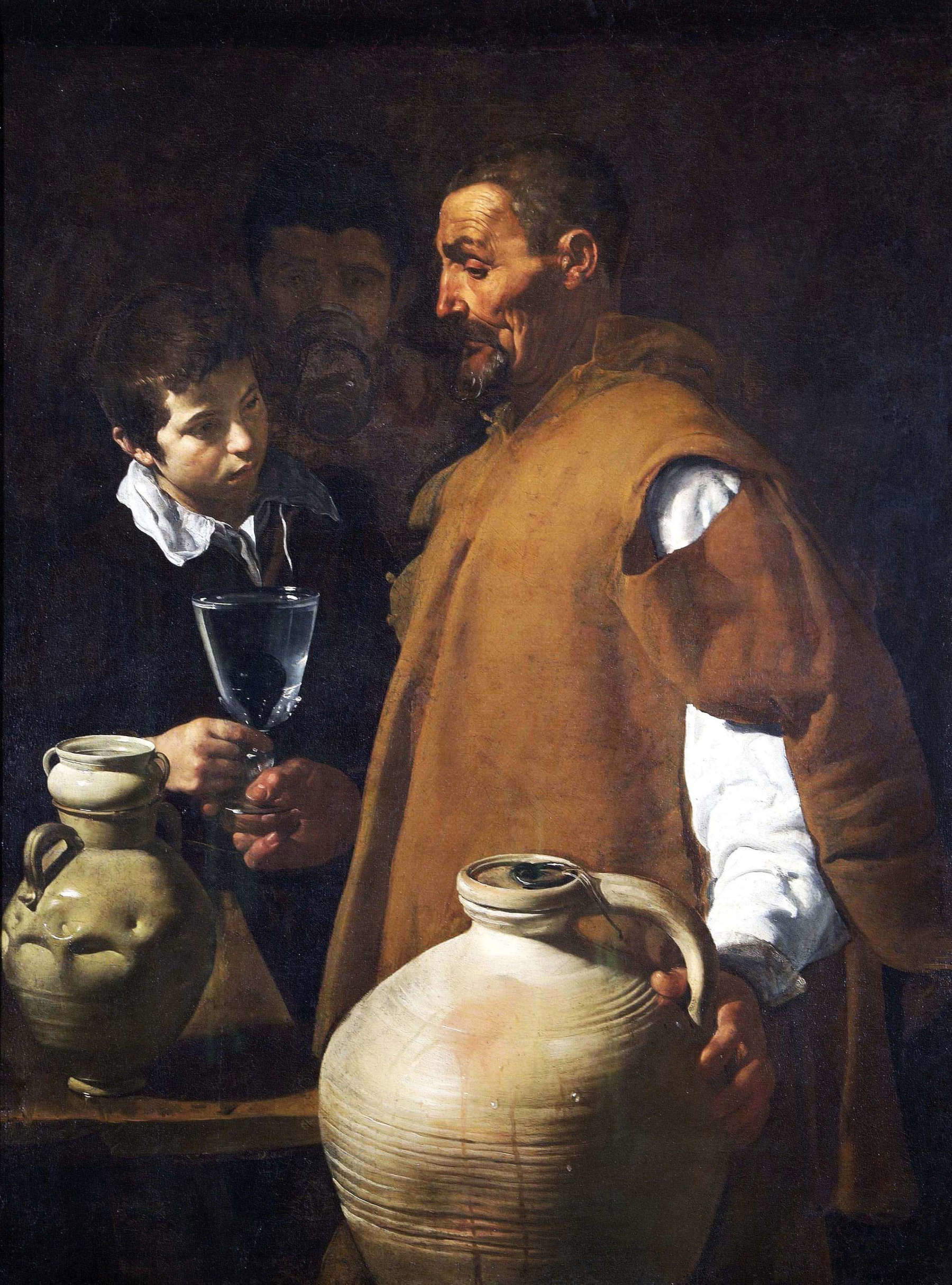
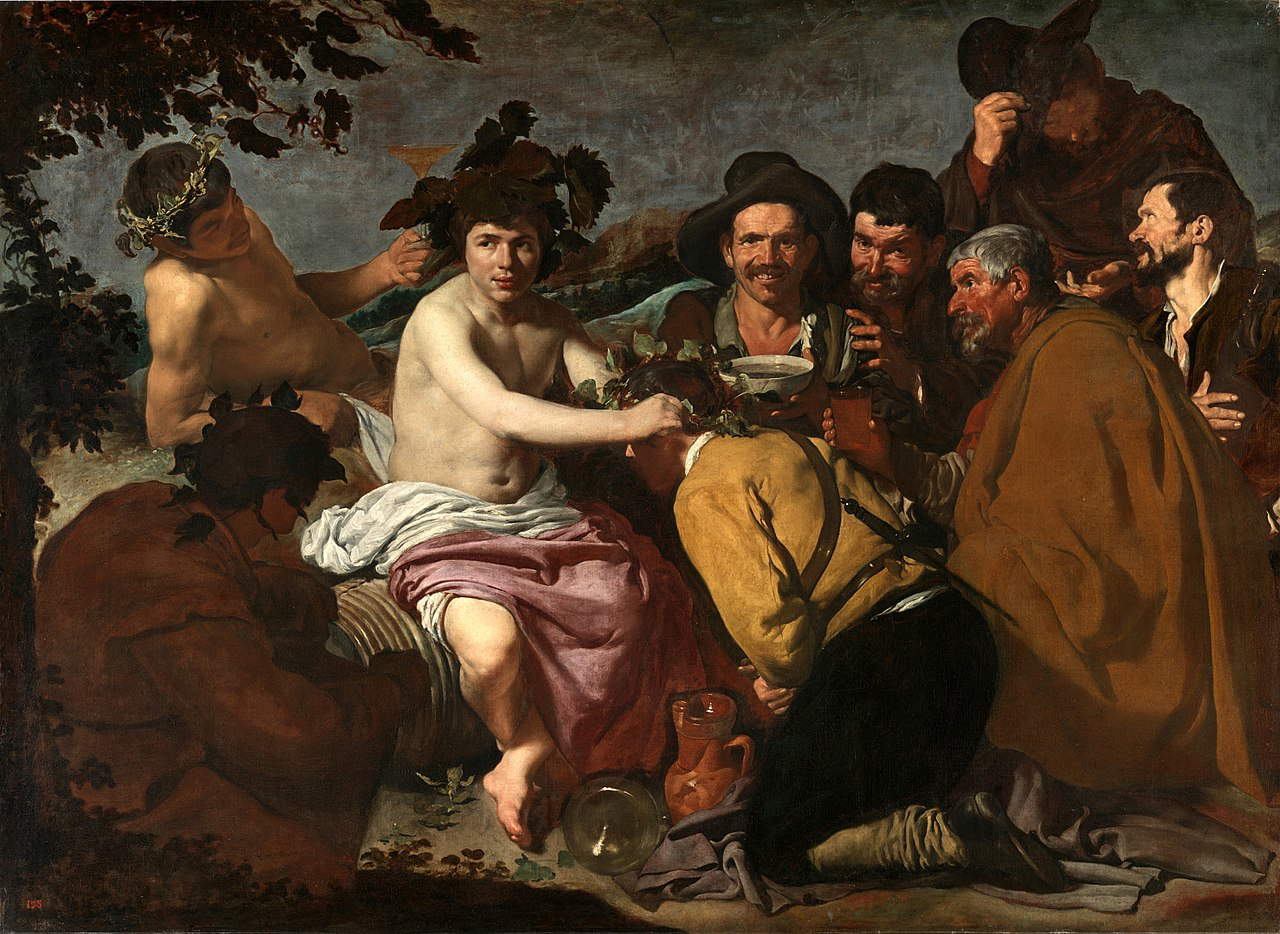
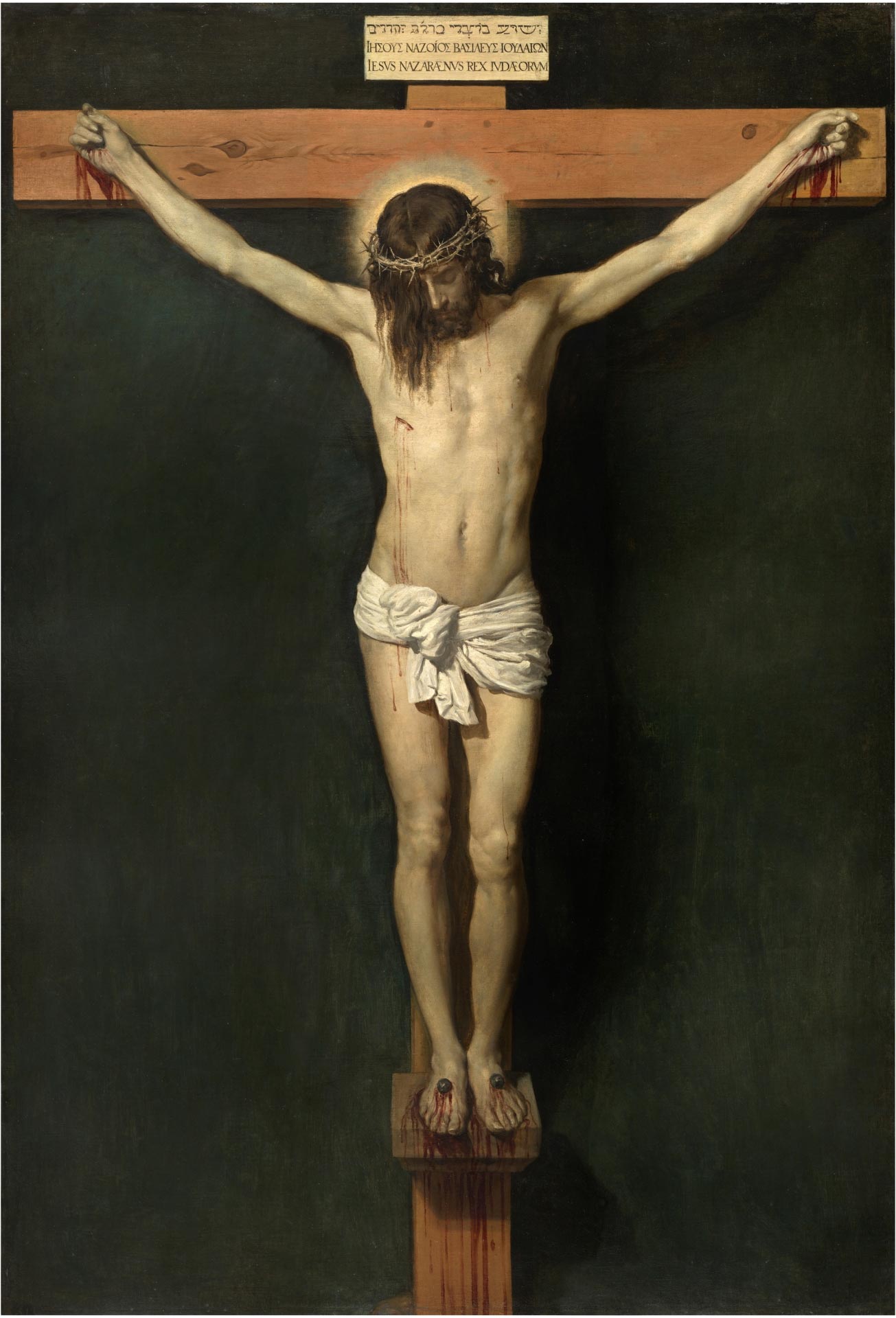
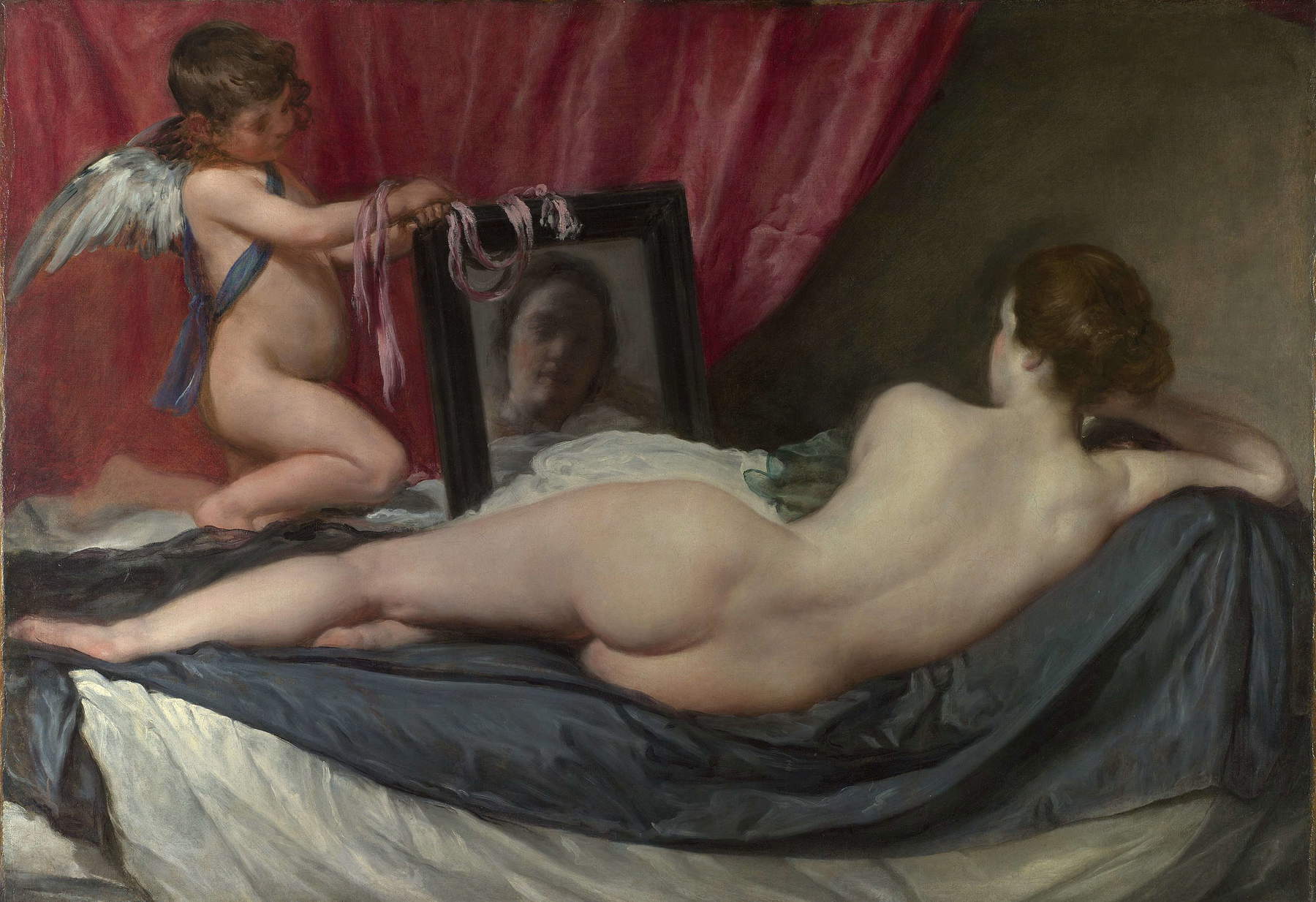
Style and major works of Diego Velázquez
Diego Velázquez’s first artistic masterpiece was theAquaiol of Seville, 1621. The human figures are an extract of the humblest social condition, but here depicted with a monumentality that echoes that of altarpieces. The light is already the result of an interest reserved for Caravaggism: bodies are shaped and emerge from the darkness in bursts of light. In fact, Velázquez’s artistic life can be told as an ongoing confrontation with Italian art, and here Velázquez demonstrates how well he understood the core of the Caravaggesque revolution.
Eight years later, the artist showed himself perfectly capable of mastering chiaroscuro, handling lights with great mastery. In the Triumph of Bacchus (or Los borrachos or Los bebedores), of 1629 precisely, with the characters still of popular social extraction, it is a composition with a firm, resolute stroke, leaving no hint of suspense or doubt. The work is perfectly representative of the first pictorial phase of Velázquez, who at that time had not yet traveled to Italy. He did so in January 1630, after the painter Pieter Paul Rubens told him about Titian’s paintings, convincing him to undertake the experience. Among the Italian cities, Velázquez was able to have a direct dialogue and with Italian art and culture.
During his early Roman period, Velázquez experimented with the landscape genre, which, along with the nude, was another artistic genre that the Spanish court did not allow. So he produced two views of the Villa Medici, among other things, the first paintings painted en plein air in the history of Western art. When he returned to Madrid in 1631, he did so with a load of new artistic will.
To 1632 dates Christ on the Cross (read an in-depth study here), one of the most extraordinary works of its kind to which the poet Miguel de Unamuno dedicated a composition. The canvas, monumental in size, offers a touching and intense scene while maintaining an essential line. In the center is the figure of Christ in the moment immediately following death; the Savior’s head hangs on his chest and a mass of dark hair covers part of his face. The figure stands out against a dark background that is functional to the figure’s hieraticity. When the painter finally had the opportunity to return to Rome in 1650, he momentarily left behind all those thematic restraints that the Spanish crown imposed on him. He then painted Venus in the Mirror, his only female nude. The goddess, looking into the mirror, gazes at the viewer. The painting is a perfect synthesis of Velázquez’s knowledge thus far. A color palette of unquestionable Venetian ancestry enlivens the body of an ancient statue, all in the service of a focus on the viewer’s role and involvement.
The most important painting of this second Italian trip, however, is the Portrait of Innocent X. The work represents the pinnacle of Velázquez’s portraiture, testifying to the depth of his relationship with the Italian artistic tradition, as well as his ability to fix on canvas the presence and personality of a single human being. Innocent X is of course portrayed in great detail, but here Velázquez makes a further leap, imprinting in the lines and facial expressions the characters of a living spirit and giving the composition a great sense of eloquence.
The portraits and history paintings, made Velázquez the “studio” painter par excellence: spending most of his time and work as an artist within the rigid schemes of the Spanish court, his production took place entirely within the palace, as in an atelier in which to obsessively repeat the exercise on the same guinea pig, which for him were the king, members of the court, dwarfs and jesters. From here we have an artist led to reflect on his own activity, interested in talking about his art through his own works. Velázquez’s all-visual philosophy explains what Italian painter Luca Giordano meant when he spoke of Las Meninas as a "theology of painting." Painted in 1656, four years before his death, the painting is a cornerstone of the European Baroque artistic period. The scene is set inside the painter’s studio, which was precisely located inside the palace of Philip IV. The infanta Margarita is portrayed in the center, surrounded by the maids of honor(las meninas, precisely), and flanked by a court dwarf, the result of the painter’s constant practice. The elements of the painting are executed with the greatest attention to detail. Reflected in the mirror above the little girl is the reigning couple, Philip IV and Maria Anne of Austria, who are also featured in the scene. On the left of the painting is Velázquez’s self-portrait, self-celebratory and perfectly placed in the environment of Madrid’s Real Alcázar.
One of his last works was The Spinners (the fable of Arachne), c. 1657. The painting is rich in light and air, vibrant and intense colors. The hand is very careful, there is all the experience Velázquez accumulated over a forty-year career. Among the last portraits, that ofInfante Felipe Prospero is noteworthy: the son of Philip IV and Maria Anna of Austria is depicted in all his fragility and nobility. Portrayed in detail against a dark background, the figure of the little one stands out because of the brightness of his complexion and robe. Velázquez suggested the intimate and melancholy atmosphere with soft brushstrokes, accentuating the vulnerability of the subject, who would die at only four years of age.
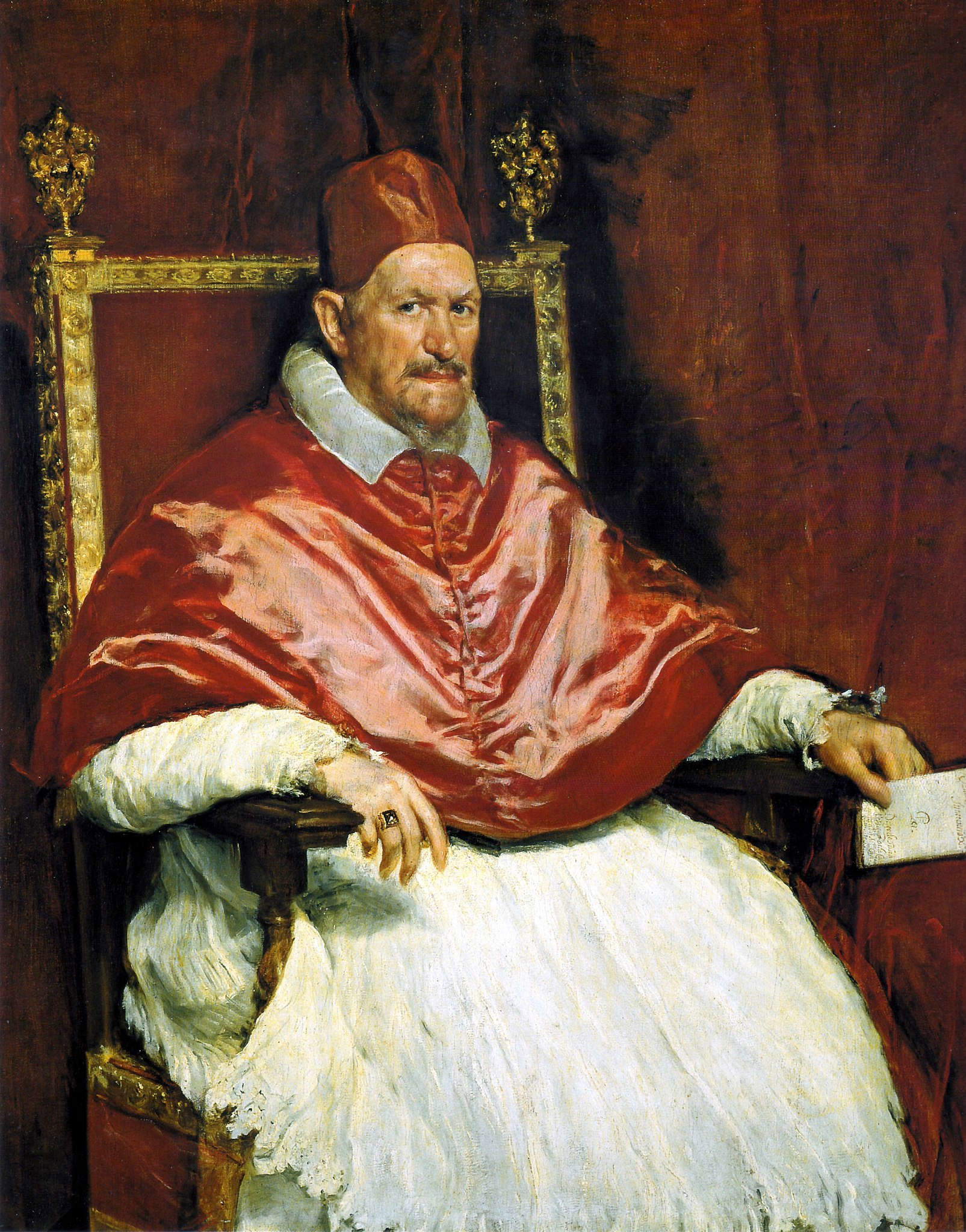
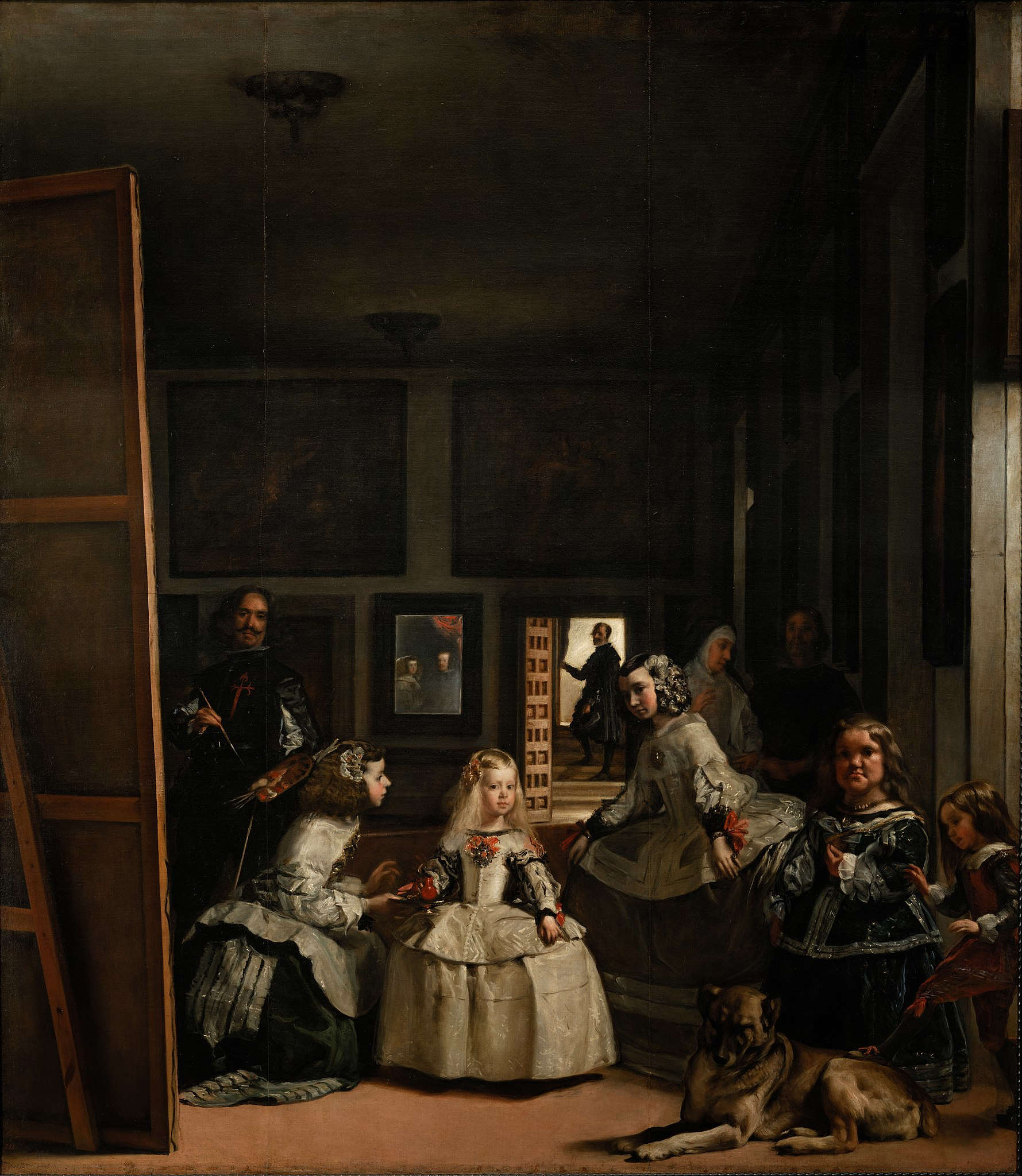
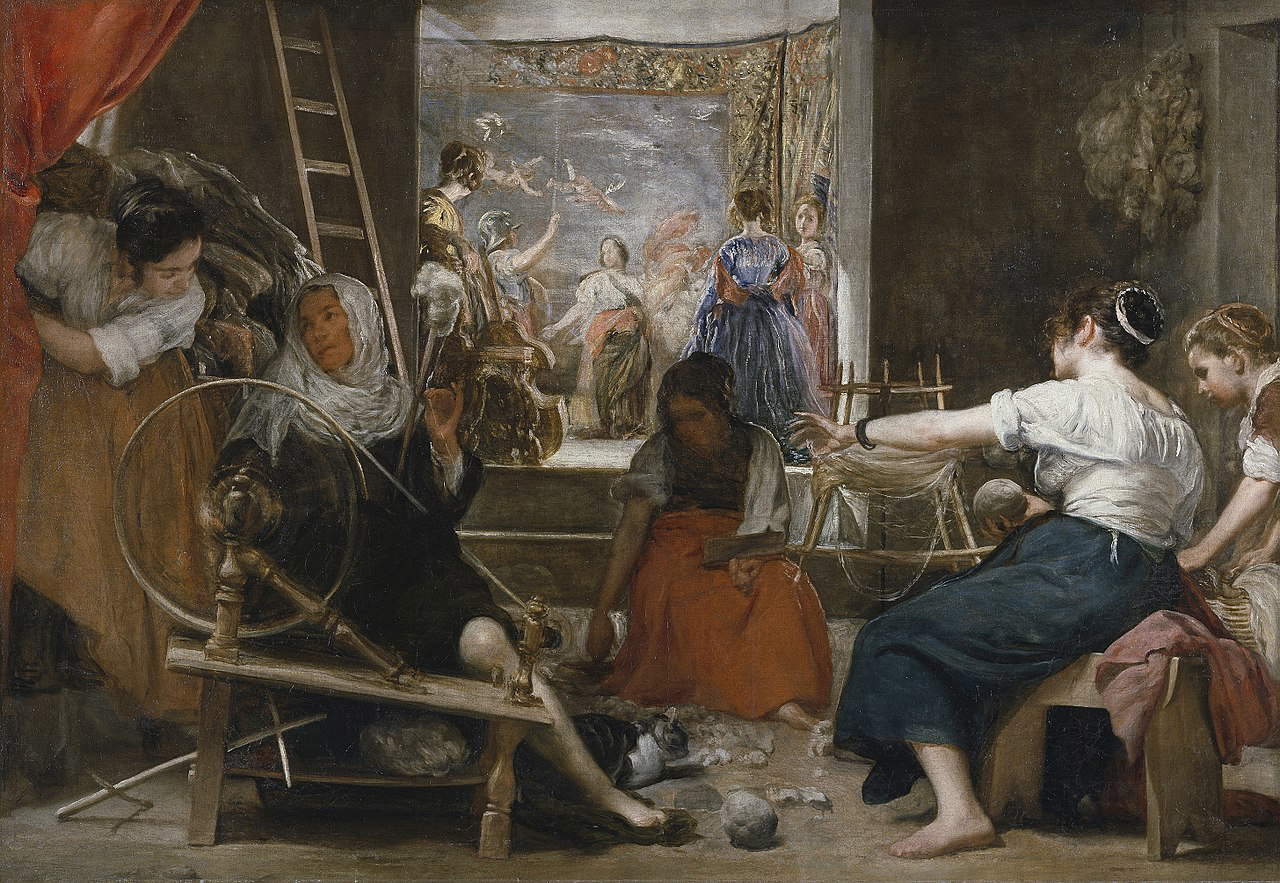
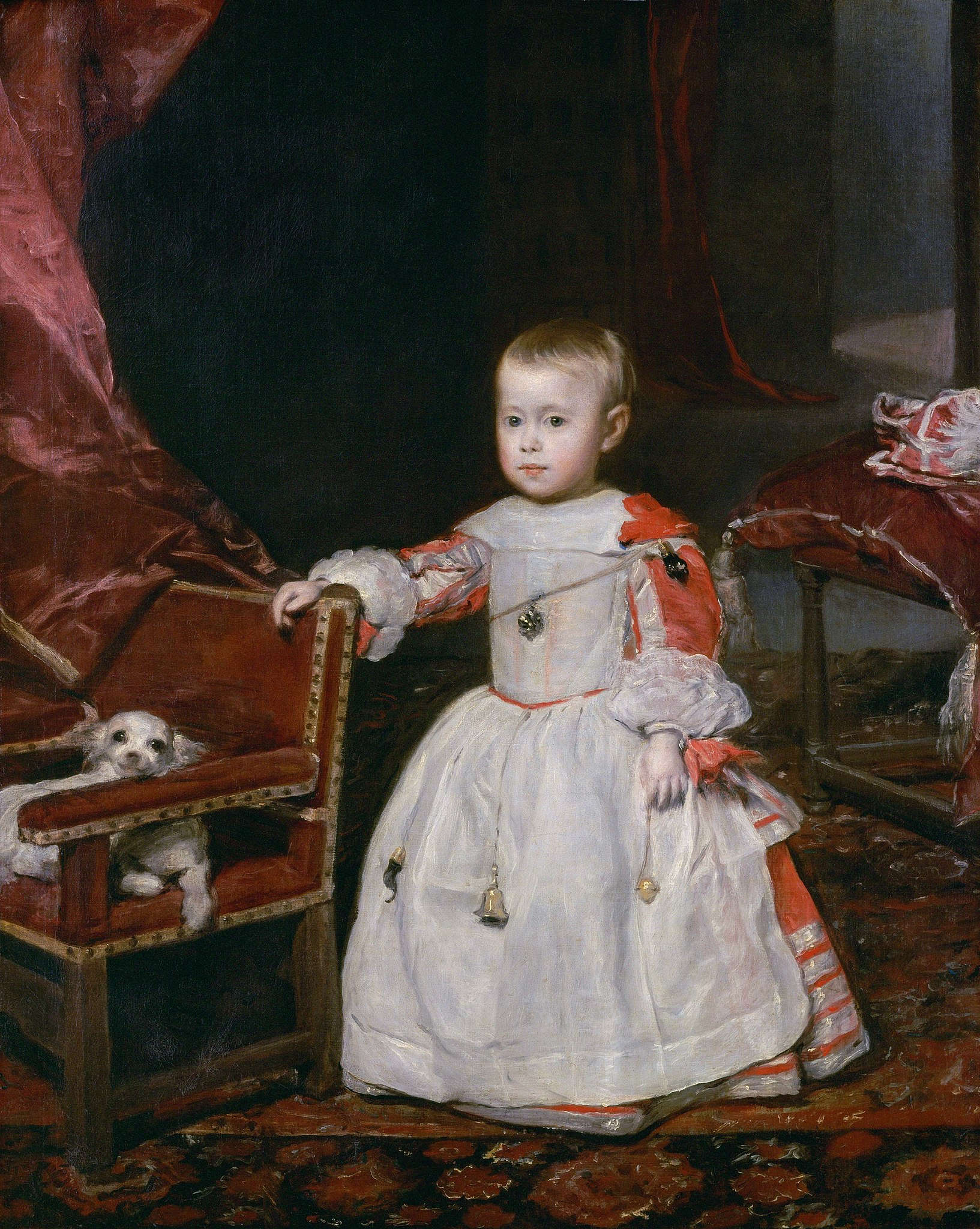
Where to see the works of Diego Velázquez
Diego Velázquez’sSelf-Portrait, oil on canvas from 1650, is kept at the Museo de Bellas Artes in Valencia. However, most of the Sevillian painter’s works are now in Madrid at the Museo del Prado: first and foremost his masterpiece, Las Meninas (1656); followed by the canvases with the Triumph of Bacchus (1629), the portrait of Pablo de Valladolid (The Comedian) (1632-33), the portrait of Diego de Acedo, el Primo (or Bufón con libros) (1644), and again the immense Christ on the Cross from 1632 and also The Spinners (The Fable of Arachne), from 1657. One can also find Vista del jardín de la Villa Medici en Roma (1630), the view made in Rome when the painter first stayed there.
In Italy, in Rome is the Portrait of Innocent X, exhibited at the Doria Pamphilj Gallery. In Modena, at the Galleria Estense, there is a portrait of Duke Francesco I d’Este, made by Velázquez in Madrid between 1638 and 1639.
In London, at the Wellington Collection Apsley House is located the oil on canvas The Aquaiol of Seville (1620), while the Venus of Rokeby (or Venus in the Mirror or even Venus and Cupid) is kept at the National Gallery. In Vienna, however, at the Kunsthistorisches Museum, is the portrait withInfante Felipe Prospero. In the United States, at the Metropolitan Museum in New York, is the Portrait of Juan de Pareja, painted by the painter during his second trip to Italy.
 |
| Diego Velázquez, life and works of Spanish Baroque painter |
Warning: the translation into English of the original Italian article was created using automatic tools. We undertake to review all articles, but we do not guarantee the total absence of inaccuracies in the translation due to the program. You can find the original by clicking on the ITA button. If you find any mistake,please contact us.





























